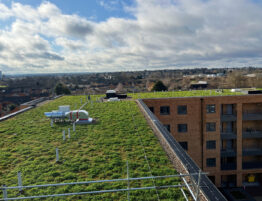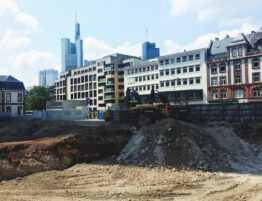
Since the clocks went back in October, the hours of daylight have been getting shorter and that means many construction workers (including those working in office support roles) will be spending at least part of their working day and commuting time in the dark.
This can result in additional safety and security issues, including the risk of accidents occurring on site or while travelling to work as well as more malignant factors such as premises and/or workers being targeted by thieves taking advantage of the cover of darkness.
Here, we look at six simple ways you can stay safer this winter.
1. Light up the workplace
We know energy prices are a big issue at the moment but dark working conditions are hazardous, increasing the chances of accidents, and therefore should be avoided. On site, make sure the working area is well lit (with lighting rated suitable for outdoor use) and if there are areas where fixed lighting isn’t practical or inadequate, small appliances like headlights, lamps and torches can be used.
2. Be bright and visible
High-visibility clothing is essential PPE on construction sites at all times but in winter months this becomes even more important. Wearing hi-vis workwear helps to ensure operatives can be seen while carrying out their tasks (hopefully avoiding an accident). If an accident does occur, it also makes it easier to locate where they are exactly. Hi-vis clothing should be cleaned regularly to maintain its brightness and reflective qualities and be sure to replace it when it falls into poor condition.
3. Take care when alone
If you have to work alone during the darker days, it is important to follow some lone-worker precautions. We’ll look at those in more detail another time but for instance, you’ll want to make sure you have a means of raising a signal that will bring help in the event of an accident or criminal attack. Whilst personal attacks are rare, having a personal alarm or similar device to hand could offer peace of mind.
4. Conceal devices
Aside from tools and equipment, devices like smartphones and laptops are a big attraction for thieves. Having them stolen is not only upsetting and inconvenient to the individual but, if they contain sensitive business data, that could cause further issues at a company level. Make sure such devices are not exposed to this risk by keeping them with you as much as possible and placing them away, in a securely stored backpack or case, when not. Make sure also that all your devices are adequately insured and password protected.
5. Collective commuting
Whether you’re driving, using public transport or walking, the shorter days between November and February can make every aspect of the commute to and from work more hazardous.
Car sharing is a good option as this helps people to take turns at driving and reduce fatigue, for instance with one person taking the morning journey and another person taking over in the evening. Car sharing can also help those who don’t drive (and therefore might otherwise have to take a riskier option) and gives everyone peace of mind that colleagues are all arriving home safely. If there is only the option of using public transport and/or walking, again there is safety in numbers so try to find a travelling companion wherever possible.
6. Stay alert
Darker environments require people to focus more on the potential risks and dangers to their safety, however these kind of environments can also cause people to become fatigued. It’s therefore important to do whatever it takes to stay alert. That might mean taking a quick coffee break, switching up your tasks at regular periods, or taking some time to be fully aware of exit routes so as to be prepared in the event of a malicious incident.
Let us know if you have any other tips for staying safe and secure this winter. Comment over on our Facebook or LinkedIn pages.
30.11.2022
Feature image: Freepik








